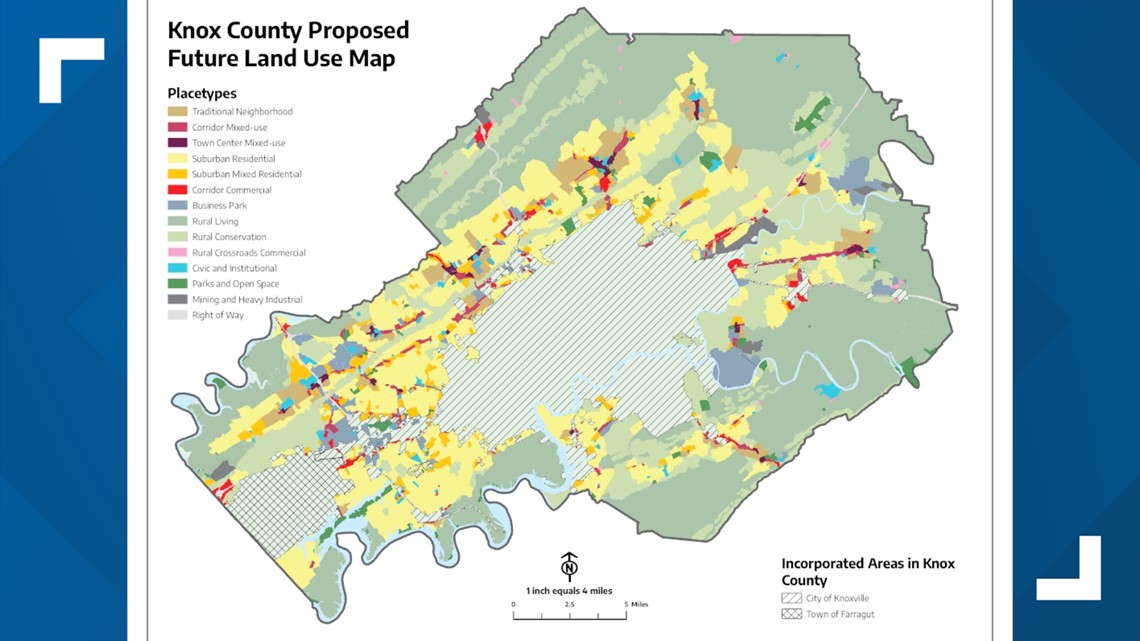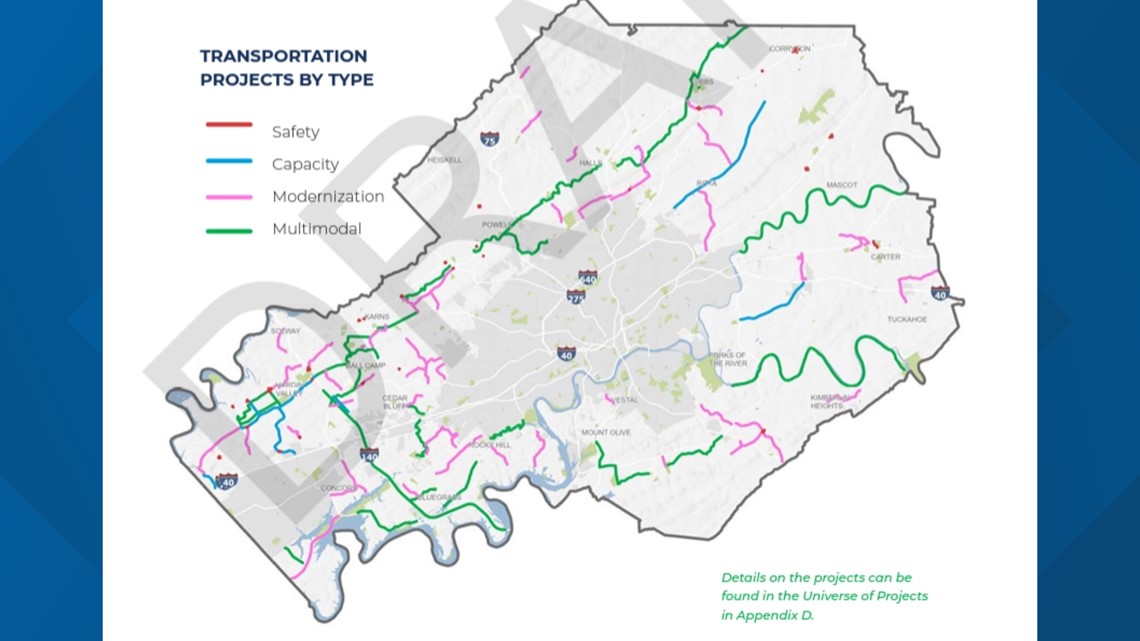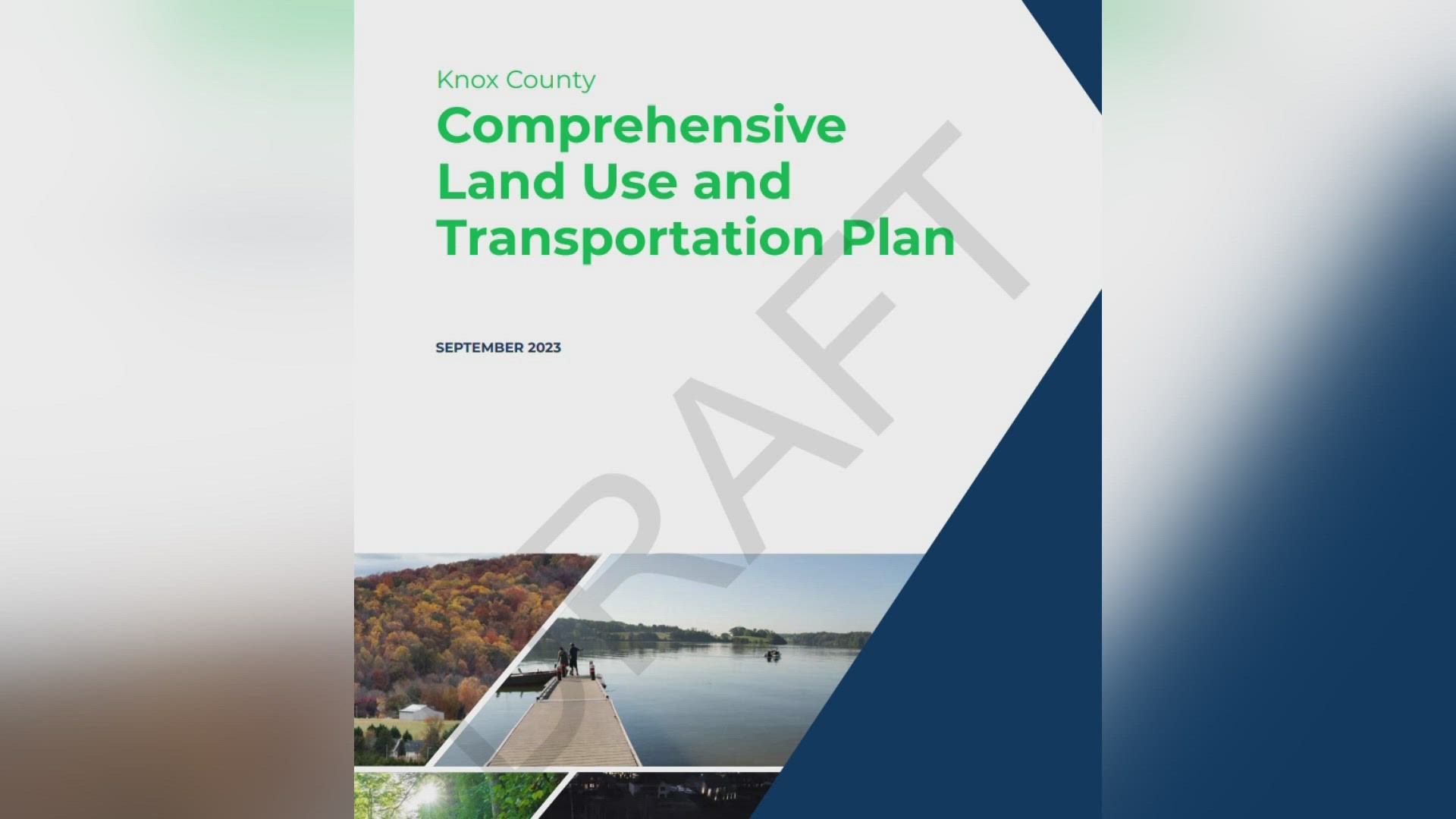KNOX COUNTY, Tenn. — Advance Knox began at the end of 2021, gathering from the public and studying Knox County's landscape to create a plan that could establish policies and principles guiding future development decisions.
The program unveiled its draft plan on Tuesday, and it says by 2045 the county is expected to add 79,000 people to its population, totaling 557,000 residents. As part of the process, Advance Knox presented residents with three potential scenarios for the future of Knox County's development. The team then created a draft-preferred scenario which was shared with schools, utility sub-committees, the Technical Committee and an Advisory Committee for feedback.
It was then refined and shared with county commissioners and leaders of Farragut and Knoxville. The preferred scenario was then revised, and Advance Knox used it to make transportation recommendations and a new Future Land Use Map. The recommendations only apply to the county and not Knoxville or Farragut, but the county can propose planning solutions to both areas as part of the plan.


The preferred scenario is not as detailed as the Future Land Use Map but serves as the baseline for developing the map.
The map expresses the county's intent on where and how it could grow. It recommends most of the county's future development be "suburban residential," describing areas for single-family homes with lot sizes less than one acre.
This type of growth features future developments with street and path connections to adjacent neighborhoods, all within a walkable distance to parks. It also says they should be a bikeable distance to commercial areas.
It also recommends most of the western outskirts of Knoxville include "rural crossroads commercial" areas. These areas are predominately at intersections within rural areas, offering goods and services that meet day-to-day and agricultural needs.
It recommends the northern and eastern outskirts of Knoxville feature "corridor commercial" areas. These areas have a mix of commercial developments like shopping centers, large-format retail and "auto-oriented uses." Developments are mostly made of one-story, large-footprint buildings but can also include multi-story hotels.
The transportation recommendations focused on four specific areas: safety, capacity, modernization and multimodal projects. The team made specific project recommendations in different areas across Knox County.


They estimated the total anticipated revenue available for capital projects between 2024 and 2045 at $395.5 million and said an estimated $452.2 million would be available for maintenance projects in the same timeframe.
The plan also recommends mostly prioritizing park investment in western Knox County. It also recommends policymakers improve the predictability and transparency of the development process, while also making sure developments are "sensitive to existing community character."
It says leaders should encourage infill and redevelopment of underutilized commercial areas, and incentivize the development of walkable, mixed-use centers, corridors and neighborhood service nodes when it comes to commercial development. Developers should also create neighborhoods with a variety of housing and amenities in close proximity, the plan said.
Advance Knox also said leaders should promote attainable housing that meets the needs of the current and future residents by creating parking standards, allowing housing to be built in commercial areas and identifying areas for multifamily development with appropriate support infrastructure.

